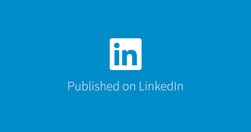Overview: Digital Transformation
Digital transformation is an over-used, over-abused term. Here’s what it means to me.
From many strategies ...
In most organisations, the following strategies are barely on speaking turns, let alone fully integrated and mutually supportive:
- Internal communication: Every day, valuable ideas and information pour into your organisation as staff engage with stakeholders and discover useful knowledge online. But what happens then? If a piece of knowledge is valuable to them, it's probably also useful to their colleagues ... so why does so little of it circulate within your organisation?
- Internal collaboration: Are your staff still emailing documents to each other, and spending hours tracing the latest version and integrating changes?
- Knowledge management: Can your staff find the knowledge they need efficiently, share information effortlessly without flooding everyone’s Inboxes, and serendipitously discover relevant information around the digital equivalent of the office watercooler?
- External communication: There is no better advocate for any organsation than empowered staff and engaged audiences. Have you transformed your workforce into Social Ambassadors, and launched communities to engage your customers and stakeholders in co-defining the future?
- Training and employee engagement: Even if you have the tools, can your staff use them? Do they know why they should?
... to one strategy: build an internal innovation community
How can you integrate the above strategies, processes and tools? By treating them as different aspects of one, overarching goal: the creation of an internal innovation community throughout your organisation.
everyone is trained and motivated to share knowledge internally and externally, supported by efficient tools and processes
The idea is to frame the above strategies, processes and tools as interconnected tactics within an overall strategic framework. This aligns them to a shared set of goals: an organisation where everyone is trained and motivated to share knowledge internally and externally, supported by efficient tools and processes for knowledge management, internal and external communications.
From Strategy to Implementation
Having such a strategy is all very well, but noone will notice if you never implement it. You'll need to plan for unknowns, coordinate experts who have never worked together before, and integrate project and change management so that:
- change rolls out with the new features, tools and processes,
- these are developed with your staff, not foisted upon them.
I’ve specialised in the intersection of internal and external communications, collaboration and knowledge management since 1995. If you need help, get in touch.
More services: start with Communication strategy.
Relevant resources

when it comes to teams, many hands do not make light work... four to six members is the team best size for most tasks, that no work team should have more than 10 members, and that performance problems and interpersonal friction increase “exponentially as team size increases.”... if you are on a big team that keeps screwing up... try some subtract…

"Much of what social collaboration tools are designed to support is shallow work, and the stuff of managerial oversight... deep productivity comes from supporting deep work - cognitively demanding activities that leverage our training to generate rare and valuable results, and that push our abilities to continually improve - trying to support…
"In a previous post, I outlined the benefits of Five Whys... Today, I want to talk about the mechanics of Five Whys in greater detail." - Lessons Learned: How to conduct a Five Whys root cause analysis
"I have come to believe that this technique should be used for all kinds of defects ... we use the defect as an opportunity to find out what's wrong with our process, and make a small adjustment. By continuously adjusting, we eventually build up a robust series of defenses that prevent problems from happening.... breaking down the "time/quality/c…

"The Five Whys technique was developed and fine-tuned within the Toyota Motor Corporation as a critical component of its problem-solving training... "by repeating why five times, the nature of the problem as well as its solution becomes clear." ... dig into each problem that arose until they found the root cause. "Observe the production floor w…

"... is to foster alignment and enthusiasm toward the right goal. I’m thinking of official leaders (and myself) when writing the above, but there are official and unofficial leaders in every organization. " Very short post, very worth reading. Sometimes the simplest insights are the most powerful. - The Job of Leadership — Inside Medium — Medium

Lessmeeting looks like a cool tool. Even if you don't try it: "Below is our best practices guide to writing meeting agendas, capturing meeting minutes and following up on action items:"

"We couldn't understand why people without technical knowledge had to tell programmers "what" to do and, furthermore, they had to supervise "how" programmers did it." At last. Someone said it. And also quite a bit more about the timesucks that are meetings, email and commuting. These guys avoid all of them, work 4 days/week and are growing …

"I think companies such as Asana (which I love) will be the future of business consultancy. They will substitute the big consultancies leveraging big data, just like Coursera will displace traditional course providers by leveraging information on how people use training and using this information to design more effective training. Business consult…